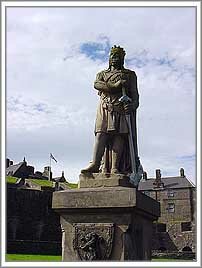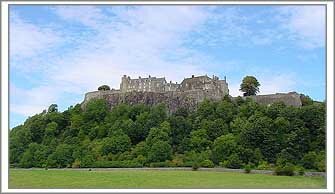
The spectacular rocky crag where Stirling now stands provided a favourable place to live amongst the marshy land of the carse that surrounded it. People have dwelled on the rocky outcrop since the early days and inevitably due to its geographical location, became a hillfort.
During Roman times Stirling became the strategic heart of Scotland. The importance of the rock was highlighted when the Picts, Scots, Britons and Angles fought for the ultimate power of controlling it. As time went by the Scots won the struggle of the four rivals.
Stirling is also the place where the many historically significant battles were fought. Famous battles were won at Stirling Bridge and Bannockburn against much larger English armies. The Historic figures of Sir William Wallace and Robert the Bruce leading the army of Scots to victory.

The area around Stirling was also home to another famous Scot. Rob Roy McGregor roamed the mountains of the Trossachs and was buried at the village of Balquhidder.
Stirling became a regular home for the Scottish kings. With no permanent capital, the capital became the place where the king held his parliament, on many occasions Stirling. Stirling developed into a major medieval trading town partly due to the royal residence. The presence of royalty continued with many important names such as King James IV and Mary Queen of Scots living at the castle.
To the west of Stirling is situated the famous bonny banks of Loch Lomond. During Victorian times the Loch granted a suitable water supply to the industrial town of Glasgow.

Today Stirling is still full of historic and royal structures, which makes it a highly interesting place for visitors and a proud home for its community.
|

